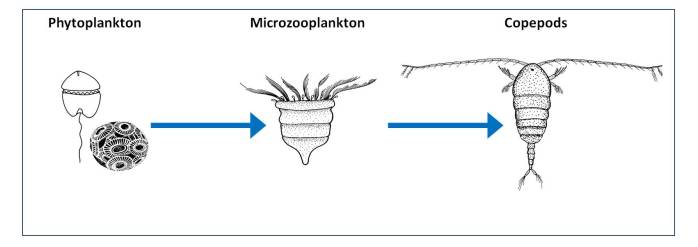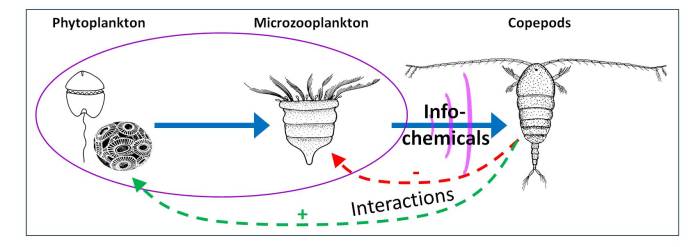So, I’ve decided to start a blog. And what better place to start than with a bit about me and my research.
My name is Nicola Lewis and I am a 3rd year PhD student at the University of Essex, working on a research project entitled ‘Modelling the role of DMS in pelagic multitrophic interactions’. This is a theoretical project, where I use a range of mathematical techniques and computer simulations to study ecological interactions – hence the name MathEcol-ic! So that explains the modelling part, but what about the rest?
You may not have heard of dimethylsulphide (DMS), but you will be familiar with its characteristic odour, which is typically what you can smell when you’re by the sea. DMS is a chemical mainly produced by certain species of marine phytoplankton (photosynthetic single-celled organisms), a process that is rapidly accelerated upon grazing by microzooplankton (heterotrophic plankton between 20-200µm in size). DMS has received a lot of research attention because of the the role it has been proposed to play in climate regulation (the CLAW hypothesis).
The term pelagic refers to the ‘open sea’ and ‘multitrophic interactions’ to interactions between multiple trophic (food chain) levels. Phytoplankton and microzooplankton, which form the first and second trophic levels in my models, have already been mentioned. The third trophic level is marine copepods; still members of the plankton but much larger in size (1-2mm) and the main predators of microzooplankton.
The above picture shows the plankton food chain that I model, but where does DMS fit in?
As I mentioned earlier, the production of DMS is rapidly accelerated following microzooplankton grazing on phytoplankton. DMS has also been shown to elicit a behavioural foraging response in copepods, and may therefore serve as an infochemical (information-conveying chemical) cue to help copepods find biologically productive areas.
So, when microzooplankton graze phytoplankton DMS is released into the the surrounding environment. Copepods may then use this chemical information to find microzooplankton prey. This extra copepod predation on microzooplankton may then release excessive grazing pressure on phytoplankton, resulting in a multitrophic interaction.
So, what do I actually do? I build theoretical models, based on experimental observations, of these interactions and see what the resulting dynamics are. I am particularly interested to see where the models are stable and in what cases these interactions can lead to phytoplankton bloom formation, an explosion in phytoplankton growth.

